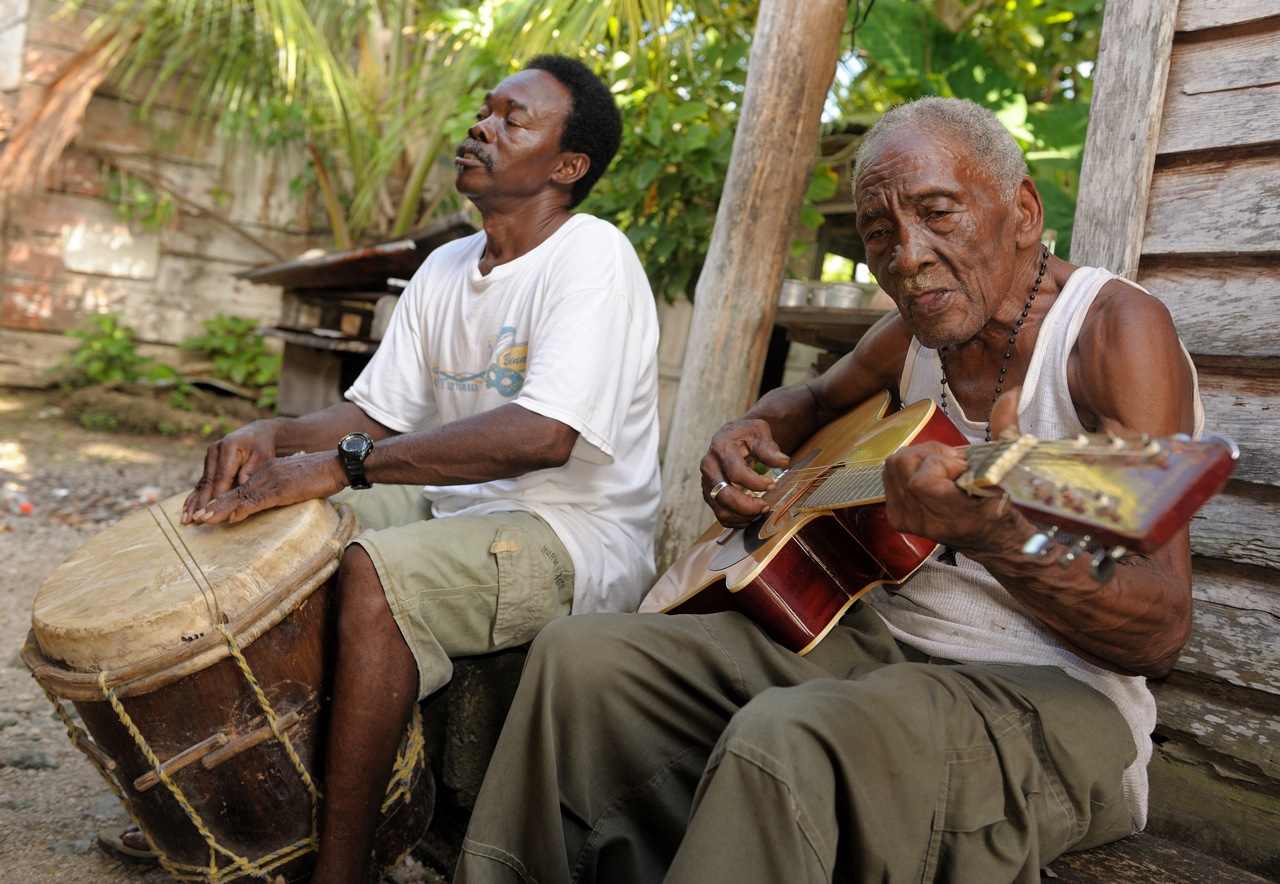[Editor’s Note: Lily Girma is the first photographer-in-residence to participate in the Road Warrior program, a partnership between MatadorU and the Belize Tourism Board. Lily is spending the summer documenting the people of Belize as well as various adventure activities that can be enjoyed around the country. Each week, she reports on her experiences for Matador, her personal blog, and for other outlets.]

Punta
The African-inspired sounds of Punta remind me of my days growing up in West Africa – the minute it comes on, I can’t seem to sit down.
Punta is a type of music that originates from the Garifuna people or the Garinagu (plural of Garifuna). They are descendants of West Africans and Caribs. Their journey began in Africa, with capture and enslavement but they escaped when the ship sank off the coast of St. Vincent in the 17th century.
They then settled in St. Vincent, where they mixed with the Caribs, and many years later, the British exiled them to an island off the coast of Central America. The first Garinagu arrived in Belize on November 19, 1802. Traditional punta is their music; it’s all about drums and African chants and is danced as a group.
When dancing punta, keep your arms and elbows close to your upper body, flexed, while shaking your behind and turning around, showing more of what your momma gave you.
Traditional punta is normally performed at major festivities or special occasions, along with a “junkanoo” performance – a satire where dancers dress up like colonial slave masters and dance.
I saw a brief junkanoo or “Wanaragua” performance (as it’s called here) during the Costa Maya festival. It developed during the days of slavery and even though the Garifuna were never enslaved like the Creole, they still performed the dance and made fun of the British slave masters. This dance is just one of many other cultural aspects the Garifuna have kept alive from their West African roots.
Who to listen to: Andy Palacio was one of Belize’s most popular musicians and one of its cultural heroes as the biggest activist for Garifuna culture and music, and the creator of the “Garifuna Music Collective.” He pushed hard for preserving traditional punta music. He died of a stroke in 2008 at only 48.
-
“Wátina (I Called Out)” by Andy Palacio and the Garifuna Collective Wátina (I Called Out)
Punta Rock
A more modern version of punta and a uniquely Belizean musical genre is Punta Rock. It’s now the most popular of all music genres in Belize, and it has spread into neighboring countries.
Punta Rock is to punta what dancehall is to reggae. And just as dancehall is more risqué, Punta Rock moves are more provocative and the hip gyrations more pronounced. You dance with a partner – usually the woman showing off her hip and rear movements, while the male watches and shakes towards her.
Who to listen to: Punta Rock artists in Belize include Lova Boy and Super (or Supa) G, who always draws a big crowd. I’d recommend his Still Standing album.
“Wala Wine” by Super G Wala Wine by Super G
Brukdown
Brukdown makes me want to sway side-to-side in the way that old-school calypso does.
This is a Belizean Kriol type of music that originated from the days of enslaved African loggers – they would often gather late at night for drumming, dancing, and chanting as a way to enjoy themselves and relax. The lyrics use the Kriol language, and Brukdown is considered to be Belizean rural music at its best.
Brukdown has a little “calypso” rhythm to it, but is a nice mellow sound that consists of African chants. Traditional Brukdown instruments include the drums, accordion, banjo, and guitar.
Who to listen to: The late Wilfred Peters and Leela Vernon, who I got to meet in Punta Gorda. The best way to hear a sample of their music and see the dances would be by finding their videos online.
Gerald “Lord” Rhaburn is also another great choice; the album The Legend features his best hits.
Paranda
Paranda is another favorite style of mine, a soulful sound backed by guitars and drums. I’m truly lucky to say that the first time I heard Paranda – another Garifuna type of music – it was performed by Paul Nabor at his home in Punta Gorda, where he was born and raised.
Paul Nabor is the world’s greatest and oldest Garifuna musician and Belize’s greatest Parandero artist. He is the reason Paranda – a Garifuna melody – has survived in Belize and why it spread to other parts of the world.
As Paul Nabor told me, he only sings about real life experiences, something he knows of or has lived through. Songs could be about romance, or about death. But the Paranda lyrics are always telling a real story, and the sound is a steady melody. This is music that I could listen to for hours on end.
Who to listen to: I recommend Paranda, a compilation album released in 2000 that features a few songs by Paul Nabor.
“Naguya Nei” by Paul Nabor Naguya Nei
Mayan Marimba and Harp Music
Mayan music is played with the marimba or the harp. I have yet to hear the marimba played live as it’s normally done: by a group of Maya men for ceremonies or special events. But I hear the music is simple yet transporting.
The marimba instrument is like a wooden xylophone, and it actually originates from West Africa. The Mayans in Belize make their own marimbas from hard wood.
Who to listen to: The only formally recorded indigenous musician from Belize is Maya harpist Florencio Mes, who plays the harp and is still alive today.